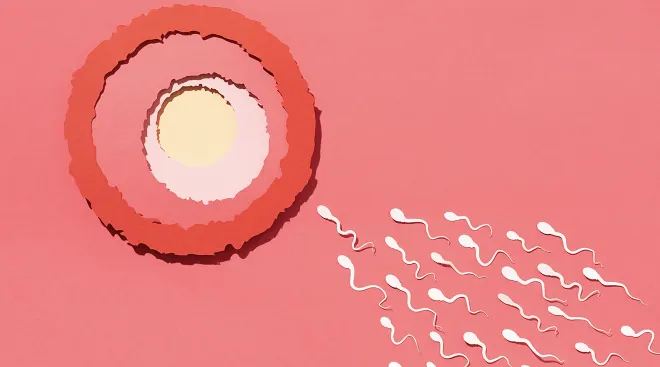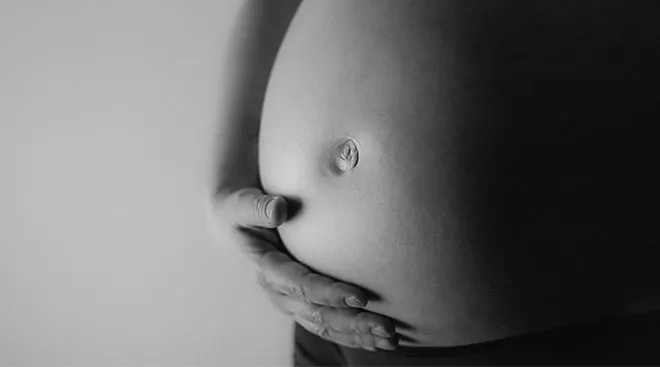8 Signs of Fertility to Look for Each Month
You’ve decided to try for a baby—congrats! But do you know how to go about trying to maximize your shot at conceiving? The truth is, women may experience certain symptoms that can signal when she’s ovulating and at peak fertility, which is helpful to know, so you can time sex with your partner appropriately. So what should you be on the lookout for? The following signs of fertility in women may help boost your chances of getting pregnant each month.
This is one sign of fertility you don’t have to work too hard to detect. Ovulation predictor kits are test strips that you pee on with the goal of detecting when your body experiences a surge of luteinizing hormone (LH), which triggers the release of the egg from the ovary (aka ovulation). A positive sign on your ovulation predictor kit signals that you should expect to ovulate within the next 36 hours. The best times to have sex are the day of the LH surge and the following two days.
Watch, Ovulation Signs and Symptoms:
When you’re not ovulating, your cervical discharge may appear sticky, cloudy or be so minimal you can’t tell you have any. But as you get closer to ovulation, your body starts to produce more estrogen as the egg that’s going to ovulate matures in the ovary. This causes your cervical mucus to become clear and stretchy, similar to egg whites. The change in discharge creates a more susceptible environment for sperm to reach the egg—so keep an eye on any fluctuations in your discharge as a potential sign of fertility.
Mother Nature is pretty smart: When you enter your fertile window (meaning the days when you’re most likely to conceive), right before ovulation, your sexual desire rises due to a jump in hormones such as estrogen and testosterone. (A pretty fun sign of fertility, no?) Not only will your sex drive shift into high gear during this time, but your body will also undergo subtle changes that make you feel sexier—and make your partner more drawn to you too. Those changes may include slightly fuller lips, a higher pitched voice and a change in your face structure, your walk and the way your hips move.
Does your partner’s post-workout body odor strike you as oddly sexy at certain times of the month? This could actually be a sign of peak fertility! One study found that women’s sense of smell sharpens as they near ovulation, and they become particularly sensitive to musky scents and male pheromones, such as androsterone. While the exact reason is unknown, that heightened sense of smell may be nature’s way of helping women pick out a suitable mate.
Have you ever noticed lower pelvic pain during the middle of your cycle? This could actually be a sign of fertility known as mittelschmerz pain. Some women describe feeling a sharp, lower pelvic cramping that can last from a few minutes to several hours in the middle of her cycle and can be a signal that ovulation is occurring. Of course, not all women are the same; some will feel this pain every single month and others may never experience this cramping, and that’s okay!
The cervix is at the top portion of the vagina and is what dilates during labor and childbirth. The cervix tends to change throughout your menstrual cycle, and when you’re close to ovulation your cervix will become higher, softer and more open. While you may think only your ob-gyn can check your cervix, it’s actually possible for you to do it on your own, although it may take some practice to know how to check for it and understand what you’re feeling.
You may have experienced that time of the month where your breasts are extremely sore, achy and have an overall heavy feeling. This is due to an increase in the hormone progesterone, which your body produces right after ovulation. So while sore breasts can’t predict when you’ll ovulate, they may clue you in to the fact ovulation occurred that month, which can be a reassuring sign of fertility.
Does spotting mid-cycle have you concerned? This could actually be a sign of recent ovulation. After the egg is released, your estrogen levels drop significantly before rising again in the luteal phase (the second half of your menstrual cycle after ovulation). The short-lived drop in estrogen may actually trigger some mid-cycle spotting that usually resolves in a day or two. However, all women’s bodies are different and many women may never notice mid-cycle spotting and still have regular ovulation.
Temeka Zore, MD, is a reproductive endocrinologist and infertility specialist as well as a board-certified ob-gyn currently practicing at Spring Fertility in San Francisco. She enjoys taking care of a wide range of reproductive and fertility issues but has a special passion for fertility preservation and educating and empowering women regarding their reproductive health. Follow Zore on Instagram @temekazoremd.
Please note: The Bump and the materials and information it contains are not intended to, and do not constitute, medical or other health advice or diagnosis and should not be used as such. You should always consult with a qualified physician or health professional about your specific circumstances.
Plus, more from The Bump:
Navigate forward to interact with the calendar and select a date. Press the question mark key to get the keyboard shortcuts for changing dates.




















































